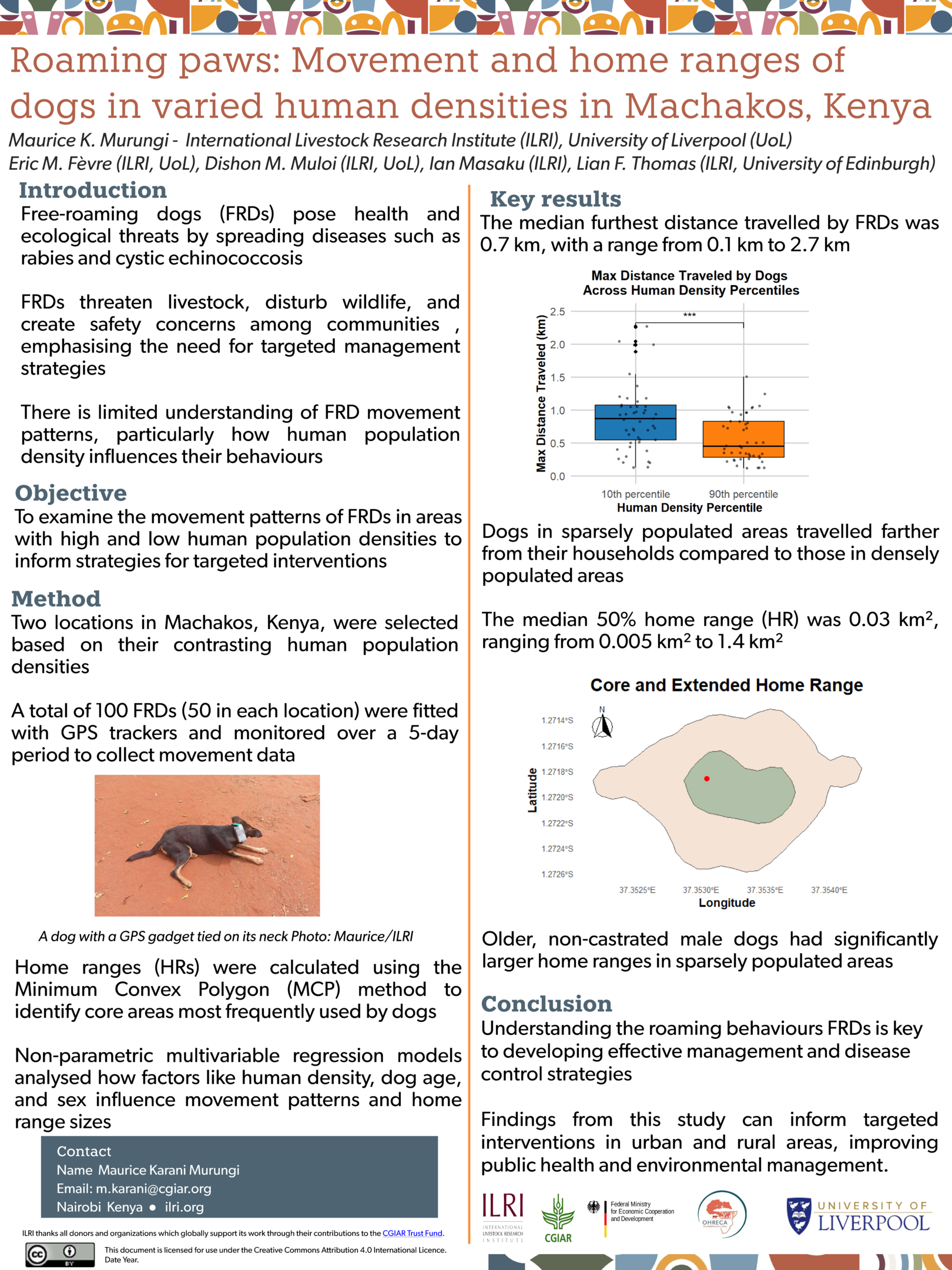
Description
Owned dogs that roam freely (FRDs) present a considerable risk to human health, other animals, and the environment by potentially spreading diseases such as rabies and cystic echinococcosis, which are of public health importance. Despite their importance, there is limited knowledge of FRDs’ movement patterns especially how human population densities influence these.
Our study investigated the movements of FRDs in two locations with contrasting human population densities. We overlaid the GPS tracks of these dogs onto satellite imagery (Google Maps). We calculated the home ranges (HR) using a Minimum Convex Polygon (MCP) and the total distance travelled standardised by the time recorded. A multivariable Kruskal Wallis analysis was employed to evaluate the impact of the dogs' age, birthplace (at home or elsewhere), and duration of residence in the household on their movement behaviours.
We found that the median distance was 212 m per hour, a range (of 26 m to 1.1 km) per hour a median HR of 17.2 ha and a range of (0.5 - 470 hectares). Dogs in sparsely populated areas had a significantly larger HR than those in densely populated locations (p= 0.04). Furthermore, dogs born in the household and those residing in the household for more than six months showed tendencies for longer travel per hour and larger HRs compared to newer arrivals (<6 months (p-values of 0.0339 and 0.0104 for distance, and 0.014 and 0.005 for HR, respectively).
These findings contribute to understanding the factors influencing the roaming behaviours of FRDs across different ecological contexts, offering a nuanced view of their movement patterns. This information is vital to devising effective, informed management and disease control strategies for FRDs in both densely and sparsely populated areas.
Comments
Add new comment